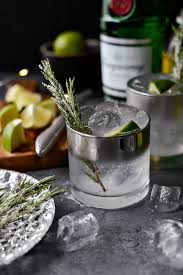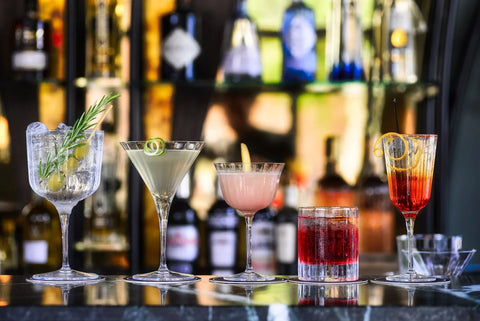The History of the Espresso Martini: From Late-Night Request to Global Phenomenon
Origins in Late-Night London
The Birth of an Icon
The espresso martini was created in 1983 by legendary bartender Dick Bradsell at the Soho Brasserie in London. The story goes that a young supermodel—widely rumoured to be Kate Moss, though this timeline has been disputed—asked for a drink that would "wake me up and f*** me up." Bradsell, working with a coffee machine next to his cocktail station, combined vodka with fresh espresso, coffee liqueur, and sugar syrup, creating what would become a modern classic.
The Original Recipe
Initially called the "Vodka Espresso," Bradsell's creation contained:
- Fresh espresso
- Vodka
- Coffee liqueur (originally Tia Maria)
- Sugar syrup
- Garnished with three coffee beans
Evolution of the Name
From Vodka Espresso to Pharmaceutical Stimulant
The drink went through several name changes:
- 1983: Vodka Espresso
- Early 1990s: Pharmaceutical Stimulant
- Late 1990s: Espresso Martini
The Martini Connection
Despite containing no gin or vermouth, the drink adopted the "martini" moniker due to:
- Serving vessel (V-shaped cocktail glass)
- 1990s trend of calling any cocktail served in a V-shaped glass a "martini"
- Marketing appeal of the name
The Coffee Cocktail Revolution
Perfect Timing
The drink's creation coincided with several cultural shifts:
- Rise of coffee culture
- Growing cocktail sophistication
- Increased interest in premium vodka
- Development of better coffee liqueurs
Global Spread
The cocktail gained popularity through:
- London's influential cocktail scene
- International travel
- Celebrity endorsements
- Social media appeal
Modern Interpretations
Contemporary Variations
Today's versions might include:
- Different coffee liqueurs
- Cold brew instead of espresso
- Alternative spirits (rum, tequila)
- Added flavours (vanilla, chocolate)
Regional Adaptations
Various countries have created their own versions:
- Australia: Strong coffee focus
- United States: Sweeter variations
- Italy: Traditional espresso emphasis
- Scandinavian: Aquavit-based versions
Technical Evolution
Coffee Methods
The preparation of the coffee component has evolved:
- Fresh espresso shots
- Cold brew concentrate
- Coffee liqueur blends
- Instant espresso powder
Equipment Innovations
Modern bartenders use various tools:
- Specialised shakers
- Temperature control
- Coffee equipment
- Garnishing tools
Cultural Impact
Social Media Influence
The drink's popularity has been boosted by:
- Instagram-worthy appearance
- Viral videos
- Celebrity endorsements
- Influencer content
Contemporary Revival
Recent years have seen:
- Craft coffee movement integration
- Premium ingredient focus
- Ready-to-drink versions
- Festival and event popularity
The Perfect Serve
Classic Technique
Key elements of preparation:
- Double shot of fresh espresso
- Premium vodka
- Quality coffee liqueur
- Vigorous shake for foam
- Three coffee bean garnish
Critical Factors
Success depends on:
- Coffee temperature
- Ice quality
- Shaking technique
- Glassware choice
- Bean freshness
Commercial Success
Mass Market Appeal
The drink has found success in:
- Cocktail bars
- Coffee shops
- Ready-to-drink formats
- Hotel bars
- Restaurants
Product Development
The popularity has led to:
- Specialized coffee liqueurs
- Premium vodka marketing
- Coffee equipment development
- Pre-mixed versions
Professional Tips
Bartender Insights
Key considerations include:
- Coffee freshness
- Temperature control
- Sugar balance
- Foam consistency
- Presentation
Common Mistakes
Things to avoid:
- Old coffee
- Weak espresso
- Over-dilution
- Poor quality spirits
- Incorrect temperature
Future Trends
Innovation
Current developments include:
- Sustainable ingredients
- Non-alcoholic versions
- Alternative coffee methods
- Flavour innovations
Market Evolution
The future suggests:
- Premium positioning
- Craft coffee integration
- Ready-to-drink growth
- Global variations
Conclusion
The espresso martini represents more than just a cocktail; it's a testament to modern drink innovation and the perfect marriage of coffee and cocktail cultures. From its creation in a busy London bar to its status as a global phenomenon, it continues to evolve while maintaining its essential character as a sophisticated and energizing cocktail choice. Its enduring popularity speaks to its perfect balance of flavours and its ability to bridge the gap between coffee culture and cocktail craftsmanship.




Comments (0)
There are no comments for this article. Be the first one to leave a message!